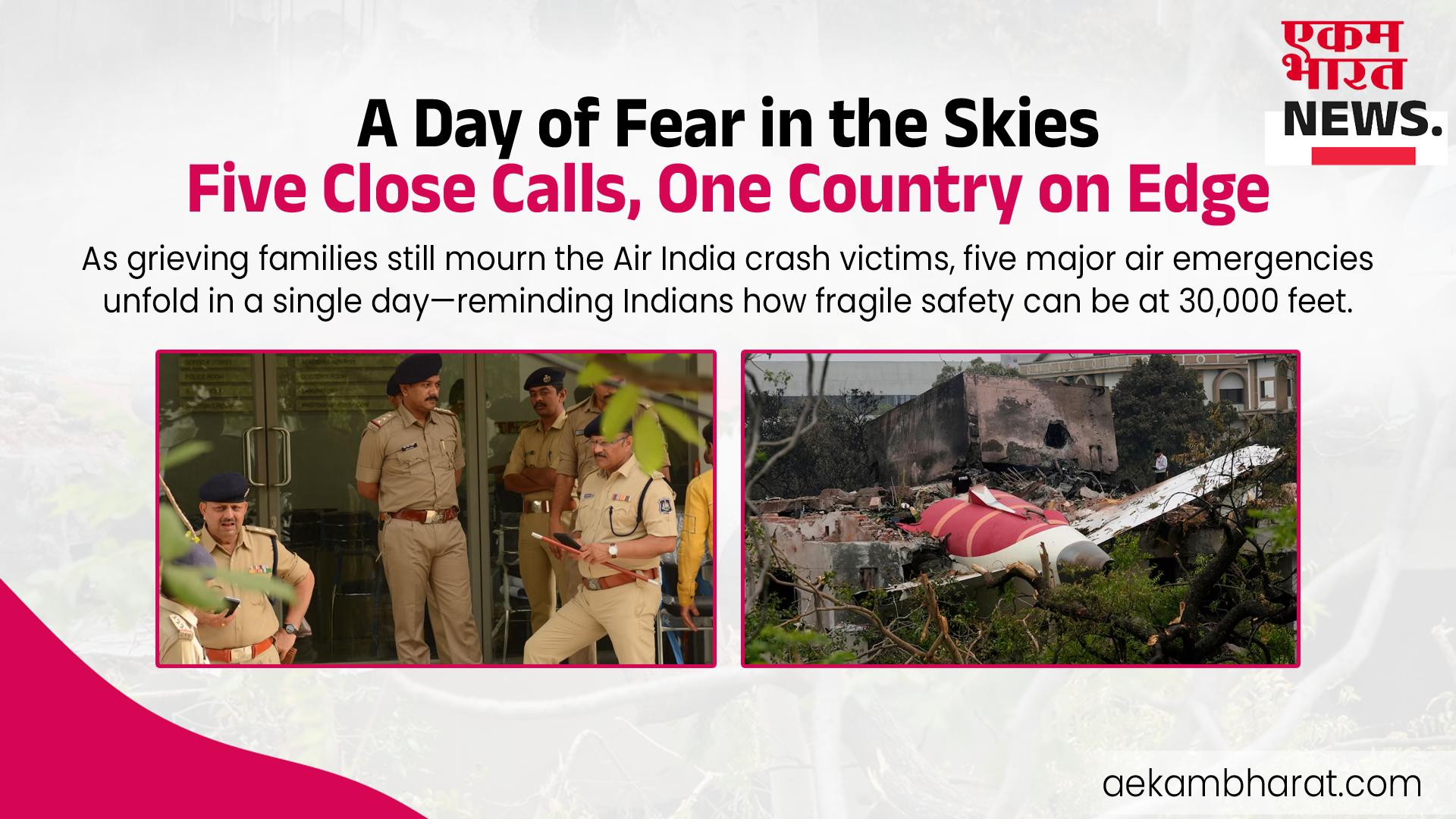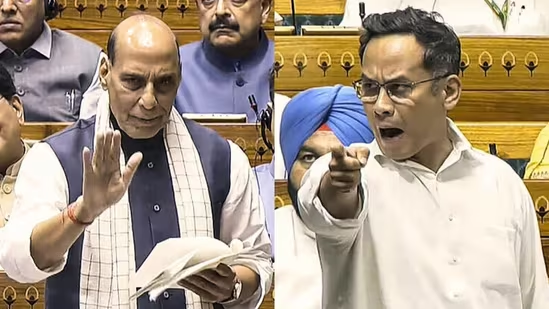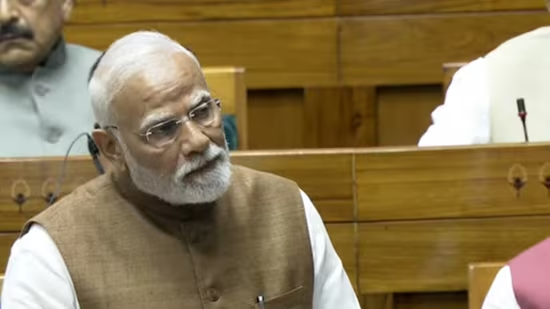As grieving families still mourn the Air India crash victims, five major air emergencies unfold in a single day—reminding Indians how fragile safety can be at 30,000 feet.
On a sweltering June afternoon, just four days after 241 people perished in the skies over Ahmedabad, India braced itself for another shock—then another, and another.
Within 24 hours, five serious aviation incidents unfolded across the country and beyond—each a chilling reminder that while we may have conquered the skies, the skies haven’t always returned the favor.
From flames licking an aircraft’s wheels in Lucknow, to a stealth fighter jet from the UK gasping for fuel over Kerala, it was a day that tested not just aviation safety, but also public trust in the machines we fly.
Lucknow: Flames Below a Holy Journey
It began with a moment of fear amid a journey of faith.
Flight SV3112, a Saudia Airlines Haj repatriation flight, had just landed at Lucknow’s airport. Onboard were 250 pilgrims, many elderly, returning from Mecca with prayer beads still clutched in tired fingers.
Then came the sparks—and smoke.
A hydraulic oil leak had triggered overheating in the landing gear. “We saw the flames near the wheels just after we landed,” said Farhat Begum, 68, who was on her first—and perhaps last—international flight. “People screamed. We thought it was the end again.”
Firefighters, trained for such moments, acted fast. Within minutes, the fire was out. No one was hurt—but hundreds were shaken.

Delhi: A Young Family’s Close Call
Elsewhere that evening, AI819, an Air India flight from Delhi to Vadodara, never reached cruising altitude. As passengers settled into seatbelts and headphones, the captain’s voice came on: there was a problem with the landing gear.
What followed was a tense 20-minute circle back to Delhi, a fuel-heavy emergency landing, and foam trucks waiting on the tarmac.
Rakesh and Neha Mehta, traveling with their 2-year-old, recalled watching a flight attendant whisper a silent prayer while checking seat belts. “We didn’t say it out loud, but we were all thinking the same thing—please not another crash.”
Hong Kong: A Dreamliner Turns Back
Far away over the South China Sea, Flight AI315, a Dreamliner headed to Delhi from Hong Kong, was forced to turn back mid-air due to a technical snag. Passengers felt the aircraft make a sudden dip before banking.
“There was a moment when people clutched armrests,” said Varun Chopra, a business traveler seated near the wing. “You could feel the unease. The crash in Ahmedabad is still fresh. We all remembered it. We all feared being the next headline.”
Phuket: A Bomb Note in the Toilet
At the same time, in Phuket, a flight back to India—AI379—was halted after a passenger found a bomb threat scrawled in a lavatory. The pilot dumped fuel and returned to the Thai airport under emergency protocols.
Security forces combed the aircraft. Sniffer dogs. Scanners. Nervous families texting home.
In the end, it was a false alarm—but the fear was real.
One passenger, Shreya Purohit, tweeted:
“Just want to hug my mom. I’m fine. But it’s scary to know how close you can come to panic in just seconds.”
Kerala: A Jet From the West Drops from the Sky
Perhaps the most surreal event came from the Indian Ocean.
An F‑35B Lightning stealth fighter, operated by the British Royal Navy, made an emergency landing at Thiruvananthapuram airport due to fuel exhaustion. Locals, used to the hum of commercial jets, were stunned by the sleek, sci-fi silhouette descending over palm trees.
Military protocol kicked in. Indian and British officials coordinated. The jet refueled and departed. No damage, no injuries—but a powerful symbol of how global military tensions can appear unexpectedly in our skies.
The Shadows of Ahmedabad Still Linger
These back-to-back emergencies have reawakened a nation still grieving. The June 12 crash in Ahmedabad Flight AI171 killed everyone onboard and left a trail of questions. Why was a Boeing 737 with known maintenance issues still flying? Were warning signs ignored?
The Directorate General of Civil Aviation (DGCA) has now announced emergency audits of Indian commercial carriers. Maintenance records, crew training, foreign airline incidents—all are under scrutiny.
Aviation Minister Jyotiraditya Scindia is expected to address Parliament, with increasing calls for a nationwide aviation safety overhaul.
Beyond Metal and Machinery, It’s Human Lives
What connects these five incidents is more than machinery—it’s the human story behind every seat number.
A child on her first flight. An old woman returning from pilgrimage. A father texting his family in panic. A young fighter pilot realizing he may not make it home.
In aviation, miracles often go unnoticed because emergencies are managed, landings happen, and passengers walk away. But when five such incidents happen in a single day, it’s no longer coincidence—it’s a wake-up call.
As India aims to be an aviation superpower of the Global South, this week was a reminder: in the air, safety is not negotiable—it’s sacred.




